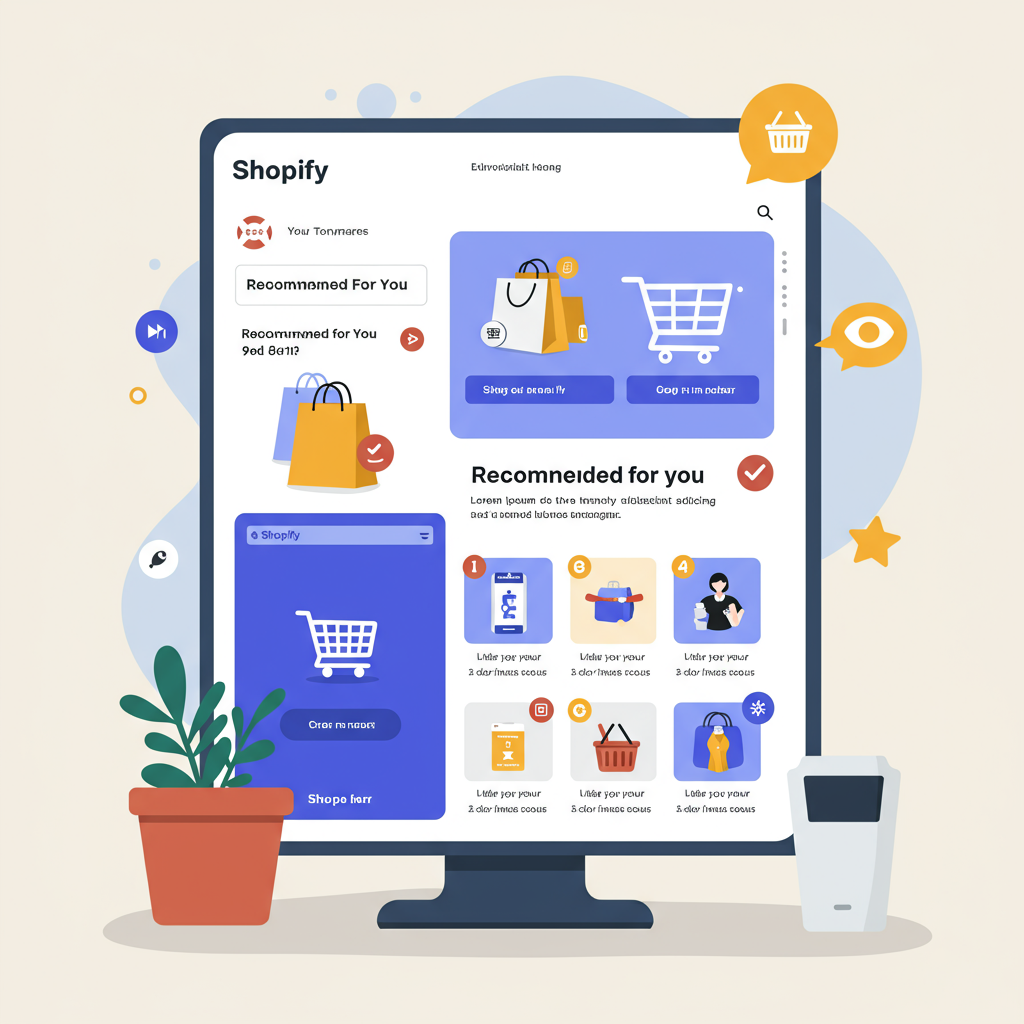Discover how integrating AI-powered recommendation apps transformed my Shopify store’s customer experience and significantly increased conversions.
As a dedicated Shopify merchant, I’m constantly on the lookout for innovative strategies to grow my online business and enhance the customer journey.
One of the persistent challenges I faced, like many of you, was how to effectively increase average order value (AOV) and improve overall conversion rates without resorting to constant discounts.
I quickly realized that product recommendations held immense potential. Guiding customers to relevant items could naturally lead to larger purchases and a more satisfying shopping experience.
Initially, I experimented with manual recommendations. I’d painstakingly link related products or suggest ‘frequently bought together’ items based on my intuition.
While this approach had some merit, it was incredibly time-consuming, difficult to scale, and frankly, not very dynamic. It couldn’t adapt to individual customer behavior in real-time.
That’s when I stumbled upon the world of AI-supported product recommendation apps for Shopify, and it truly became a game-changer for my store.
These intelligent tools leverage artificial intelligence to offer highly personalized and relevant suggestions to customers, far beyond what any manual effort could achieve.
The core benefit of AI in this context is its unparalleled ability to personalize at scale. It doesn’t just guess; it understands individual customer behavior patterns.
This isn’t merely about displaying random products; it’s about strategically showing the *right* products to the *right* customer at precisely the *right* moment in their shopping journey.
AI algorithms analyze vast amounts of data – everything from browsing history and past purchase patterns to real-time clicks and product views – to predict what a customer might want next.
This data-driven approach leads to a significantly improved customer experience, making shopping feel more intuitive and tailored, and most importantly, it directly translates into higher conversion rates for my business.
At a high level, these apps employ sophisticated algorithms. One common method is collaborative filtering, which recommends products based on what similar customers have bought or viewed.
They also utilize content-based filtering, suggesting items that share characteristics with products a customer has already shown interest in, like similar brands, categories, or attributes.
Many of the more advanced apps use hybrid models, combining these techniques for even greater accuracy and a more comprehensive recommendation strategy.
The beauty of these AI systems is their capacity to learn and adapt over time. With every customer interaction and every new piece of data, the recommendations become more precise and effective.
When I was evaluating which app to integrate, I looked for several key features that I believe are crucial for any merchant.
First, the *types* of recommendations offered are vital. I wanted options like ‘Frequently Bought Together,’ ‘Related Products,’ ‘Customers Also Viewed,’ ‘Trending Products,’ and ‘Personalized For You’ sections.
Next, *placement options* are non-negotiable. Can I display recommendations on product pages, cart pages, pop-ups, or even integrate them into email marketing campaigns?
Robust *A/B testing capabilities* were also a must-have for me. I needed to be able to test different recommendation logics, widget designs, and placements to see what truly performed best for my audience.
Comprehensive *analytics and reporting* are equally important. I wanted clear data on the direct impact on AOV, conversion rates, and click-through rates generated by the recommendations.
The ability to customize the *look and feel* of the recommendation widgets was also a significant factor, ensuring they seamlessly integrated with my store’s branding and design.
Ease of integration and a user-friendly interface were big considerations for me. I didn’t want to spend hours on a complex setup process or require extensive technical knowledge.
Finally, I always consider the *pricing model* and the quality of *customer support*. A good app should offer a clear return on investment and reliable assistance when needed.
Once I selected an app, the installation process on Shopify was typically straightforward, often just a few clicks from the App Store.
The initial setup involved defining my preferred recommendation rules, choosing where the recommendation blocks would appear on my site, and customizing their appearance.
My advice to you is to start simple. Don’t overwhelm your customers with too many recommendation blocks on a single page. Begin with one or two strategic placements.
Continuously monitor the performance metrics provided by the app. Are people clicking on the recommendations? Are those clicks leading to additional purchases? This data is gold.
Use the A/B testing features to refine your strategy. Even small tweaks to the recommendation logic or widget placement can lead to significant gains in engagement and sales.
Remember, the ultimate goal is to enhance the shopping experience for your customers, making it easier and more enjoyable for them to discover products they’ll love, not just to push more items.
While incredibly powerful, there are a few considerations. Data privacy is paramount; ensure the app you choose complies with relevant regulations like GDPR or CCPA.
Also, be mindful of the ‘creepy’ factor. Recommendations should feel helpful and intuitive, not intrusive or overly predictive to the point of being unsettling.
Finally, always weigh the cost of the app against the potential revenue increase it can generate. For most Shopify stores, the return on investment from a good AI recommendation app is very positive.
In my experience, integrating an AI-supported product recommendation app into my Shopify store has been one of the most impactful decisions I’ve made for my business.
It’s not just about selling more; it’s about building a smarter, more responsive, and truly personalized online store that genuinely understands and caters to its customers.
I highly recommend exploring these powerful tools for your own Shopify business. What are your thoughts on AI-powered recommendations after reading this article?






